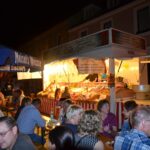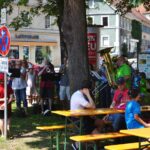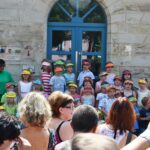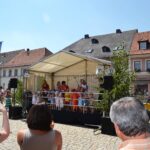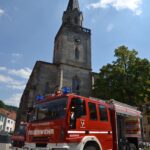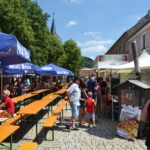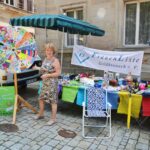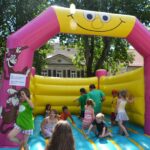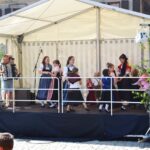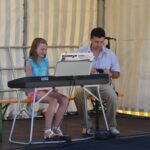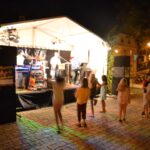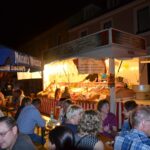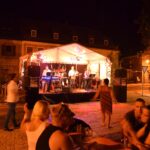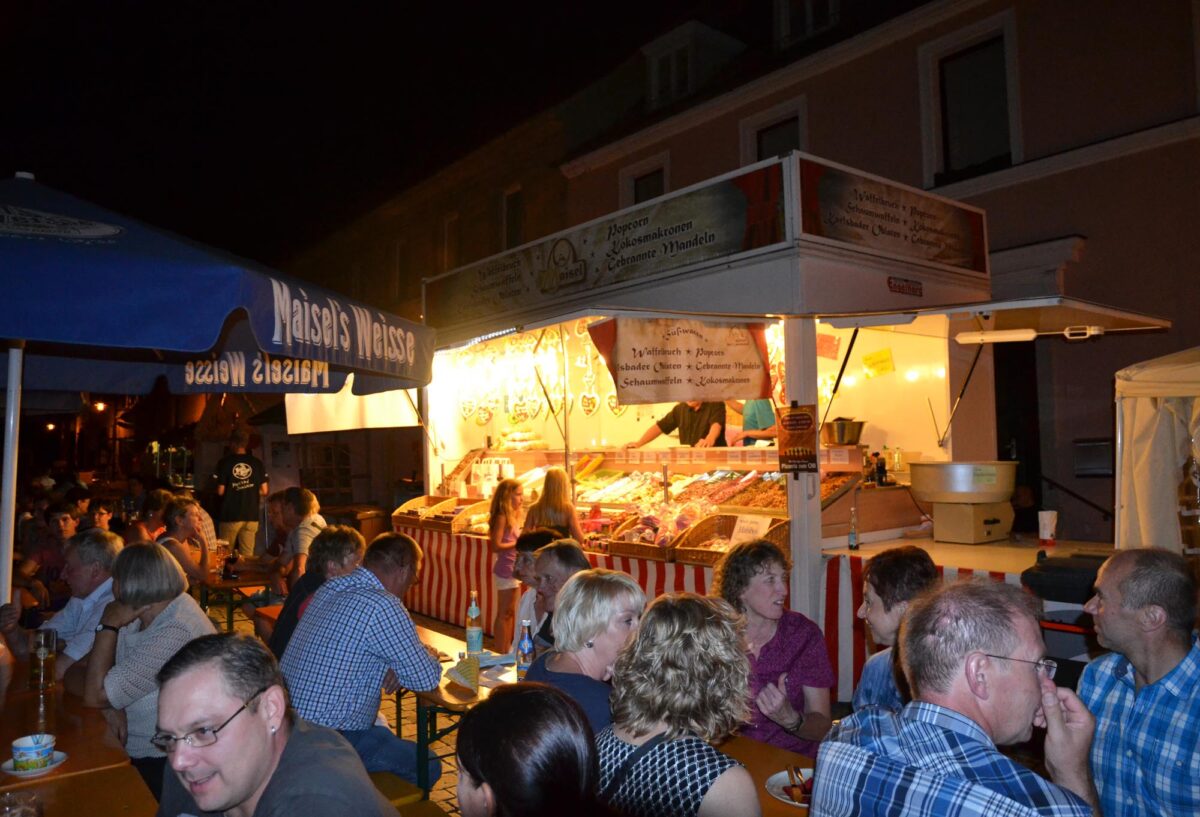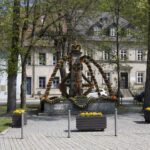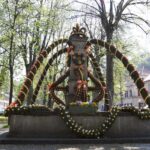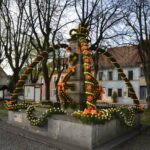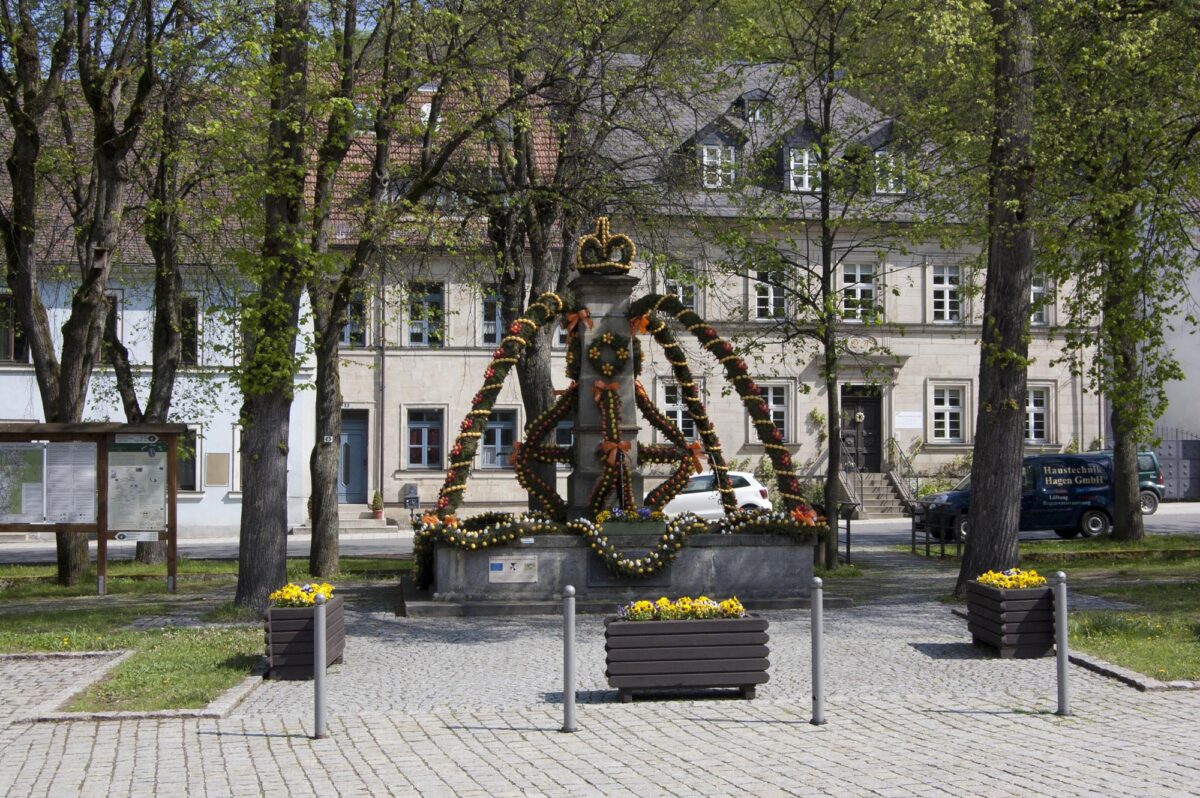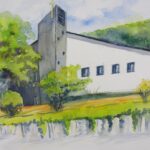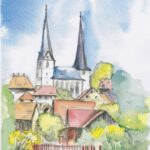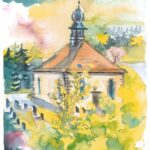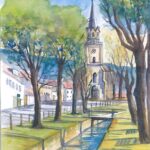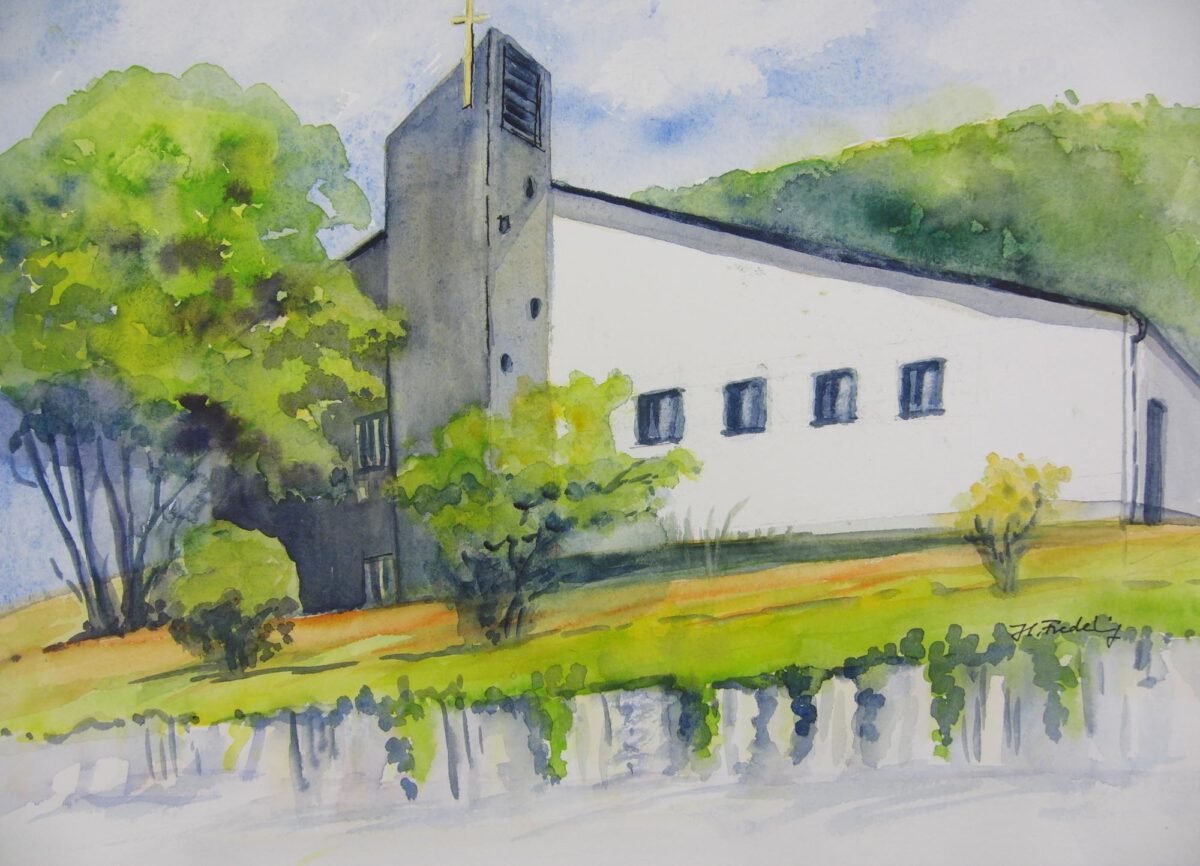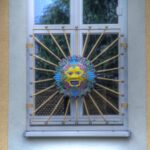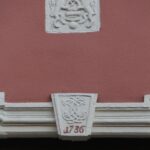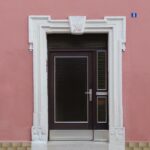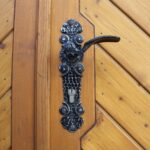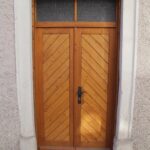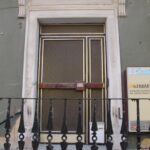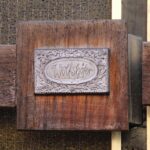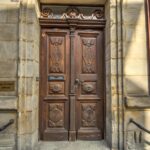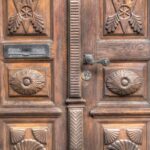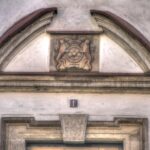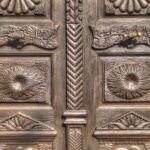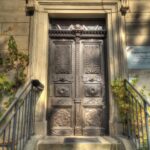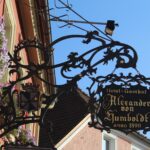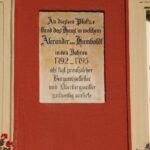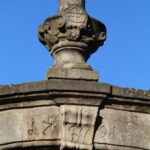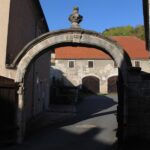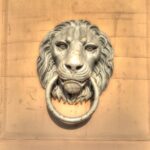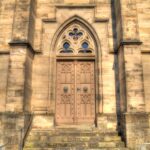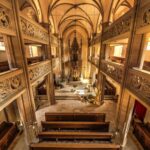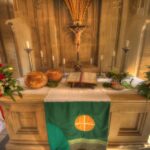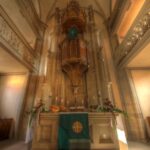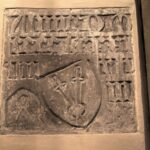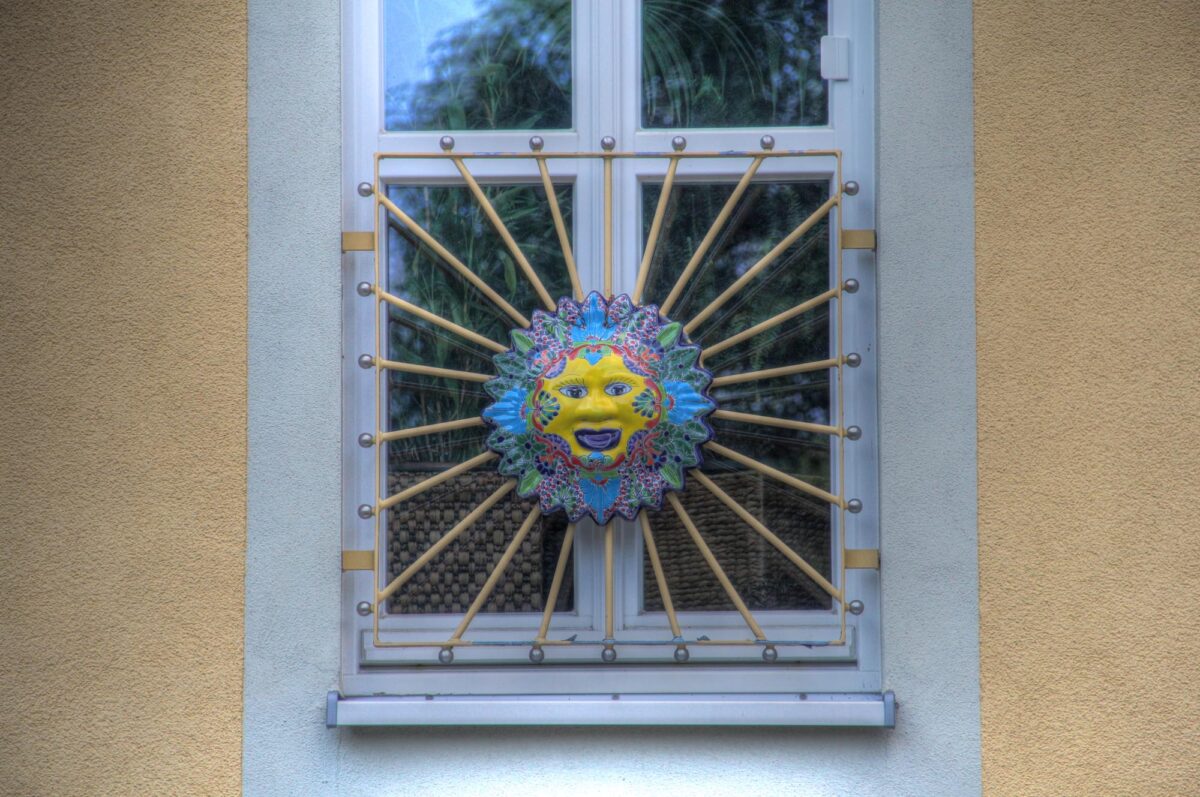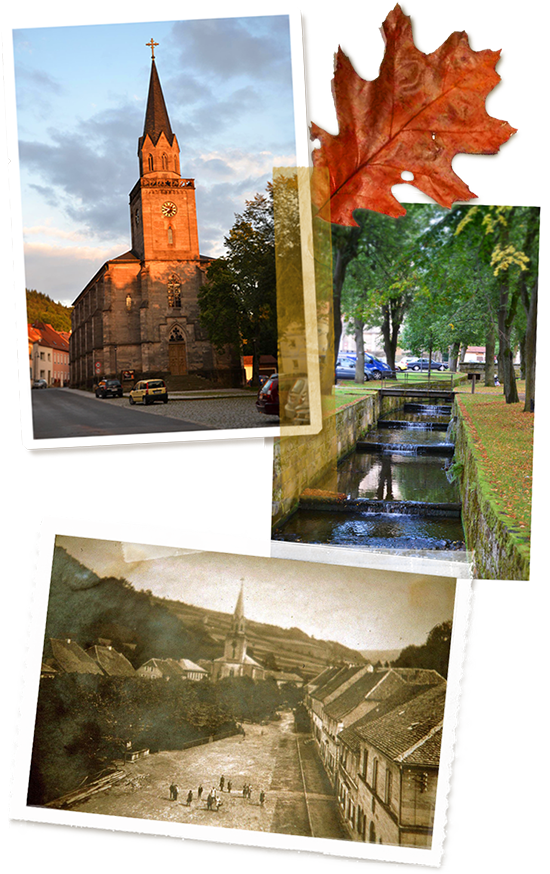
Market Place
The picturesque market square is dominated by the river Kronach. The town hall, which governs all 29 districts of Goldkronach, is housed in a former inn. The Tourist Information Center is sited in this building, too.
The town is idyllically located in the heart of many interesting natural sites such as the nature reserve, Mt. Oschenberg (see QR 35 – Nature Experience in Goldkronach).
Many trails intersect in and around Goldkronach. The easy-to-understand signage makes orientation easier and offers insight into the history of the town and the region. The Fränkische Gebirgsweg (Frankish mountain path), the Jean-Paul Trail (see also QR 15) or the Humboldt Trail are just a few of the routes which pass through the area.
At the marketplace, there are extensive maps and information on these and all other trails.
Brief Town History
Due to its rich gold deposits, Goldkronach has had a relatively turbulent history. In addition to mining, devastating disasters have repeatedly shaped the history of the town, including major fires in the years 1559 and 1613.
The Thirty Years’ War also brought gold mining to a temporarily halt (1618-1648). Another important juncture in the town’s history was in 1655, when the first citizens took over the municipal administration of the city and thus were responsible for the city’s development.
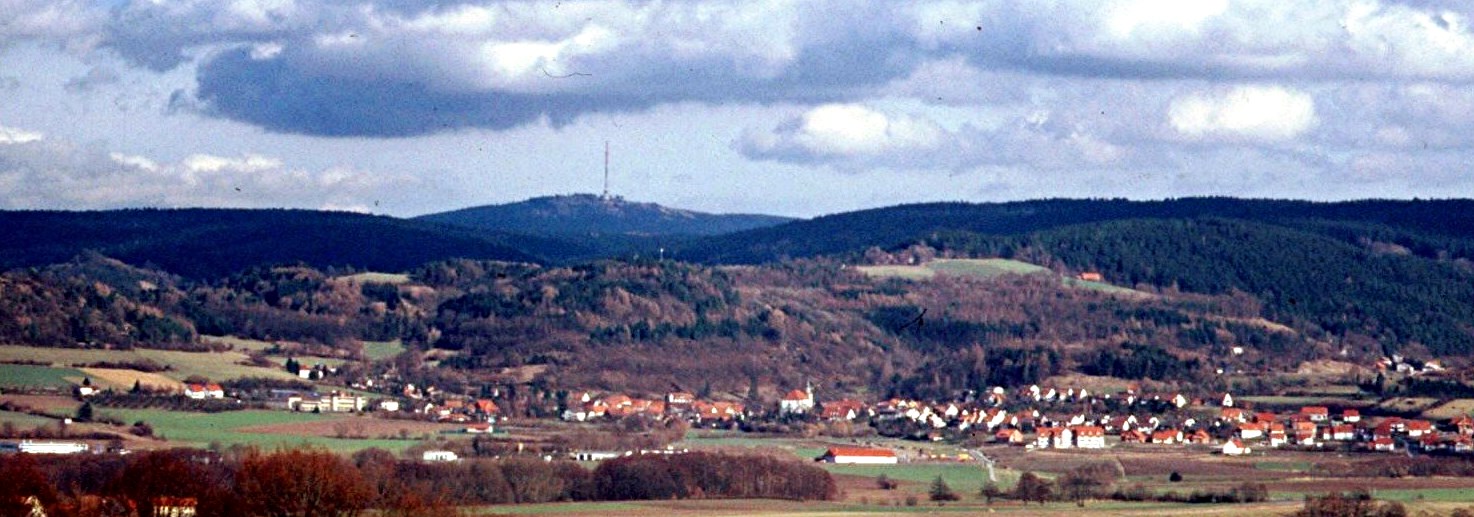
The district of Goldkronach consists of many significant villages – some of them very old – which all have their own stories to tell.
The most important districts of Goldkronach are:
Brandholz
The centuries-old history of mining in Goldkronach has left its clearest traces in the district of Brandholz. Much of Goldkronach’s remaining mining history can be experienced here; for example, in the Visitors’ Mine ‘Mittlerer Name Gottes’, (the Middle Name of God) and in the building of the former mining authority (see VIDEO). The hilly landscape hides many former mine entrances. Brandholz became part of Goldkronach in 1978.
Dressendorff
Relatively little is known about Dressendorff’s history. However, frequent changes to the name of this municipal area have been recorded: in 1487, the village was known as Trebssenndorff, then in 1495 as Tresendorff; in 1503 and 1523 it was recorded as both Trebßendorff and Drebssendorff. The name of the district has been Dressendorff since 1875 and it was incorporated into Goldkronach in 1972.
Leisau
Shaping the townscape is the Leisau castle, which probably dates from the 17th century and was the centre of a small manorship with a colorful and rich history. Leisau counted a total of 124 inhabitants in 1800. The district was incorporated into Goldkronach in 1976.
Nemmersdorf
Nemmersdorf is the oldest village within the district of Goldkronach: its history can be traced as far back as 1149. Probably it was named after its first owner, Frideric of Nedemarestorf. The town features the distinctive twin towers of the Evangelical Lutheran Church, which is visible from many parts of Goldkronach (see ART). Nemmersdorf was incorporated in 1972.
Stadtfest – Town Festival
The inhabitants of Goldkronach celebrate the annual town fair at the market square. Other regular town parties are the Christmas Market, the Church Festival, wine fests, St. John’s bonfires and many more.
Easter Decorations
The central fountain at Easter, lavishly decorated.
Local artist Hildegard Frederking has painted every church in Goldkronach.
Her watercolours reflect the lively, vibrant town environment.
Tourist Mine, the ‘Middle Name of God’
A short extract from the film ‘Gold im Berg’, produced by Arcadia Productions, 2008.
The ‘Gold’ in Goldkronach
Church painter Volker Wunderlich gilds the ‘Gold’ in Goldkronach for the QR-Tour.
Architectural Details:
Carved wooden doors and elaborate metal banisters, as well as a peek inside the church
Diary of an American in Goldkronach, 2014
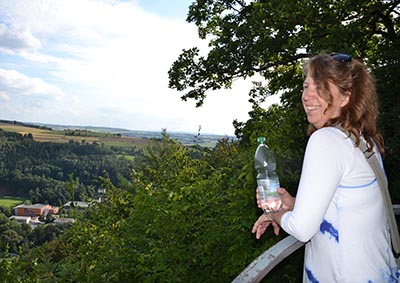
Rolling, forested hills to the northeast: green valleys, cut into squares of variegated browns and greens to the south west. A view to the horizon: the panorama of the setting sun, every night: variable yet eternal.
This place appeared to be a paradise for families when we moved here from Berlin. Homes with white picket fences. Sheep across the street. Instead of one-hour commutes, it was only fifteen minutes to Bayreuth.
The town looks like something out of a fairy tale. The church is set by a brook running the length of the town square, flanked by trees and crossed by three bridges. The town square has cobblestones and a graceful fountain which is decorated with the seasons. Vivid yellow roses bloom in the same beds year after year.
The village has everything you could want: a butcher, two bakers, a post office, a pharmacist, some shops. A school, a kindergarten, a Catholic church, a Lutheran church. A library, a museum, restaurants. Everything is quick to get to; however, service is not always quick. The pace of life is different here. Although I did not feel stressed in Berlin, I had absorbed the tempo of the city. In Berlin, I walked more quickly and spoke more authoritatively. In shops I never greeted the cashiers and only ever paid with notes. Here, you are allowed the time to count out the exact sum in coins. You can change your mind in the middle of an order. Other people in line will comment on your choices. Children are given slices of wurst and bits of candy.
We can bike everywhere. There is an active sports club. Our children have played soccer here from ages five to eighteen. In the butcher’s shop they know when your mother-in-law is visiting and recommend the meats they know she likes best. We know our neighbors and are conscious of growing old together. We go sledding in the back yard and ice-skating on the local pond. The lifestyle is low-key: no one shows off possessions or experiences. We wake up to birdsong.
It feels like going ‘back to the land’ without being an actual hippie. About finding beauty in the homeliness of everyday and in the seasons, constant in their variety. About valuing fewer things, but those things more deeply.
Susan Graunke, from Oregon in the United States, lives in Leisau with her family. She is a lecturer at Bayreuth University and a writer.
Johann Kiessling
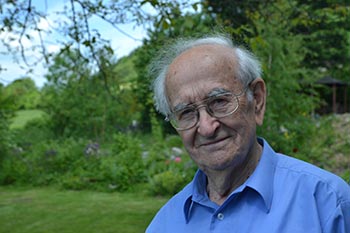
Johann (Hans) Kiessling, former headmaster and now town historian for Goldkronach, was born and raised in house number 69.
His great interest had always been the history of the region and especially his hometown. For local history lectures, and being the keynote speaker at the 625th anniversary of the mining town of Goldkronach, research led him to the State Archives in Bamberg, Bayreuth Archives and Goldkronacher Parish Archives.
The idea to compile the family history of all houses in Goldkronach that existed in 1900, originated during this research. It took nine years for Johann Kiessling to gather all the necessary information. He spent countless hours in the archives, and was also supported by Goldkronacher citizens who gave him their personal historical documents.
In 2003, his book “The stories houses tell … the history of Goldkronach” was published.
You can track the history of the town through the individual history of each building and its generations of inhabitants. It is an inexhaustible source of private genealogy and provides a wealth of information for ancestral research.
Since then, he has published two more books about the houses of the districts Sickenreuth and Goldberg (2005) and the districts Leisau and Kottersreuth (2010).
For his great contribution and commitment to Goldkronachs history, Johann Kiessling was awarded an honorary citizenship.
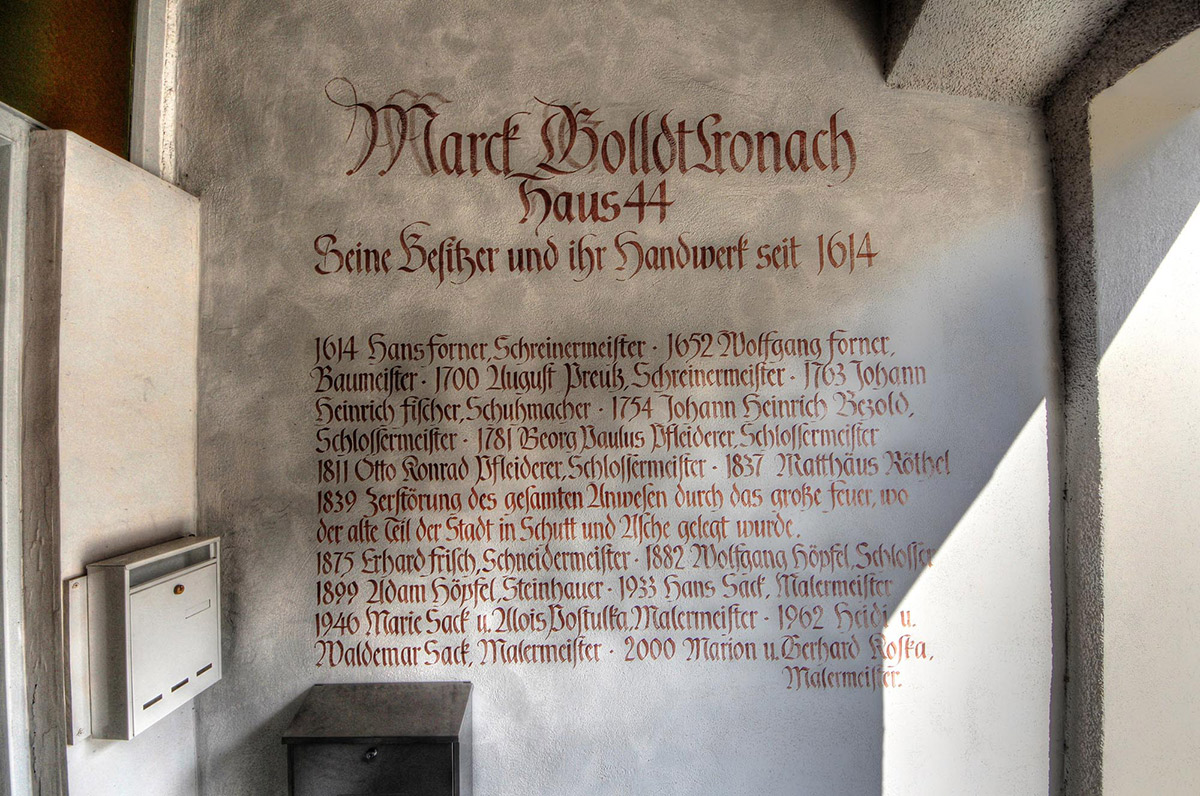
Tip:
In a doorway near the market square is a calligraphical wall painting, designed by Atelier Wunderlich, which features text from one of the books by Johann Kiessling.



